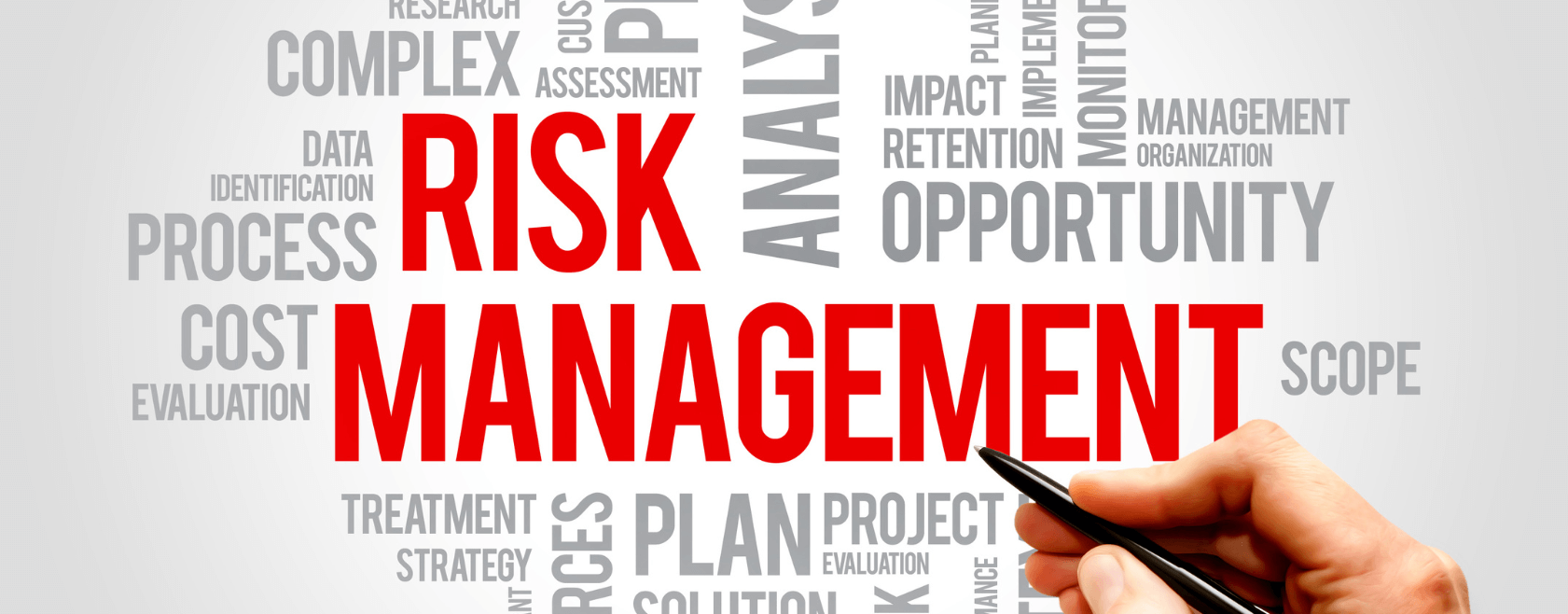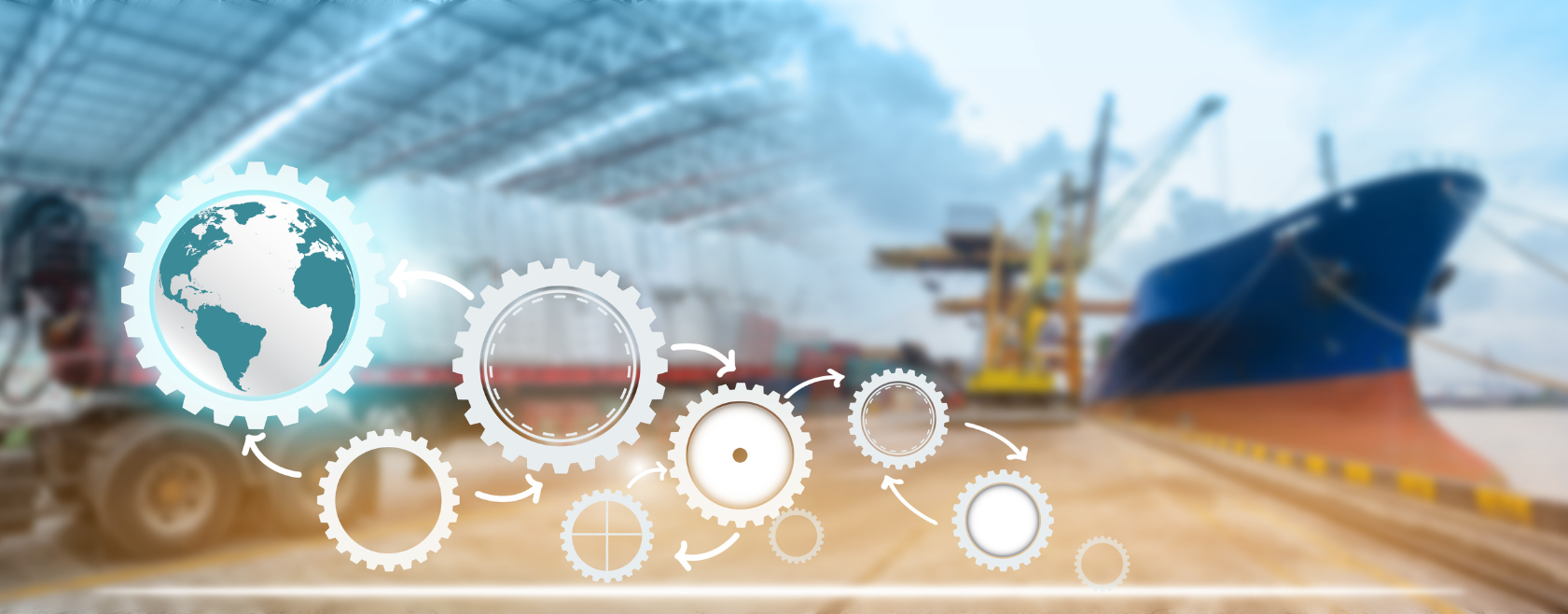Trax Transportation Spend Maturity Model: A Roadmap to Success
Supply chain management is one of the fastest evolving practices worldwide, and has become a hotbed for innovation and new technological software adoption. Market leaders have taken note.
As these leaders strive to dominate increasingly competitive markets, many have started inlining their supply chain management with data-driven practices. A Gartner survey reveals that 66% of supply chain leaders have either adopted or piloted advanced analytics in their supply chain management practice. Excelling in supply chain management, however, isn’t merely about adopting analytics, but understanding what to do with them. Therein comes the Trax Transportation Spend Management Maturity Model.
What is the Trax Transportation Spend Management Maturity Model?
Transportation Spend Management (TSM) is a data-driven approach to analyzing, optimizing, and leading the financial and operational performance of your logistics, as well as factors that impact transportation spend and the delivery of value to customers. It’s a comprehensive, integral, and complex part of superior supply chain management. Trax has taken it one step further with a guide to help you master Transportation Spend Management.
The Trax Transportation Spend Management Maturity Model is a framework that provides a roadmap for large, global enterprises to shift from a lack of visibility and control to a fully optimized and accurate data-based transportation supply chain—for all modes and geographies.
The maturity model is made up of stages: Proactive, Optimizing, and Leading. These are the phases a company goes through to fully optimize its operational and financial aspects of a logistical network.
- Proactive—Companies in this stage respond to issues as they arise, and as they evolve to become more adept at planning ahead and anticipating matters. This stage is mainly concerned with enhancing freight data management, data compliance, and freight audit and payment (FAP). It lays the groundwork for the next stage through creating a funnel for high-quality data that can be used to optimize operations.
- Optimizing—Companies here obtain high-quality data and analyze it conscientiously. This stage offers higher visibility and comprehensive information availability, allowing companies to make informed decisions based on data rather than assumptions. Through focusing on optimizing carrier and financial performance, this stage enables operations to become streamlined and risk-averse.
- Leading—Companies revelling in this stage don’t just weather challenges, but use them to their advantage, widening the gap with the competition. This is accompanied by the aptitude, capability, visibility, total control, expertise, and optimized operations to fully lead the market. They’re pioneers of the market, driving change and innovation while simultaneously growing their market share and drastically cutting costs. Companies in this stage can focus on strategic transportation optimization, which impacts the entirety of the supply chain and boosts company growth and stature immensely.
Trax Transportation Spend Management Maturity Model- Proactive
The transformation as companies evolve through the Trax Transportation Spend Management Maturity Model brings better planning, forecasting, anticipation, and flexibility. The Proactive stage, which is highly focused on data management and analysis, is concerned with elevating visibility, data quality, access to information, and accurate decision making.
Entering this stage, you respond to issues as they arise, sometimes without adequate backup plans or contingency measures in place. For example, you receive an invoice with higher fuel costs than in the estimate, triggering the freight audit and payment sequence. Planning ahead and realizing the market was trending upward for fuel charges would’ve circumvented this surprise. As you mature through the Proactive stage, you become more prepared and can begin anticipating matters. You have a plan—and even a backup plan—locked and loaded for any scenario so you can handle issues smoothly and effortlessly.
But first, you must optimize your freight audit and payment process, as it acts as the cornerstone of Transportation Spend Management through immense data collection and management. A robust FAP process offers cost reduction, cost avoidance, and denfisible audit procedures aligned with your requirements. You can collect the data you need for the most important metrics you require to make informed, savvy business decisions.
Journeying through the Proactive stage greatly enhances your freight and logistics data management process. Mastering FAP is just a part of it. Our tools help you easily centralize high-quality, diverse datasets from across global transportation networks. With adding in rate management optimization, you can ensure compliance and gain higher visibility into compliance variance by carrier, lane, and region. This helps you attain a robust freight data management strategy.
Throughout this stage, at Trax we help you achieve a constant influx of high-quality and consistent data so you can begin optimizing your operational and financial practices.
Comprehensive carrier scorecards, global rate management, intricate KPIs, and an efficient data compliance strategy will lay the groundwork for continuous improvement and better visibility so you can elevate your supply chain.
Let’s look at an example of two companies at the beginning and end of the Proactive stage.
Example of Proactive Companies
Company A has matured through the Proactive stage while Company B has yet to begin.
Company A actively anticipates invoices for shipments, continuously grades carriers through carrier scorecards, and utilizes past and real-time data to make decisions. In the hectic holiday season, Company A has the necessary setup to match invoices to manifests, conduct streamlined FAP, and switch to different carriers in a heartbeat in case of availability issues or constraints. This company utilizes resources without any waste or redundancy, constantly delivering value to its clients, cutting costs on fixing errors, and spending less time and resources on claims management. Company A’s freight audit and payment process allows for collecting data while simultaneously minimizing errors that may arise.
Company A, through the use of our Trax tools and the collection of relevant data, can view all rates in real-time and in one place. The company has more options and the heightened capability to take advantage of cost reduction opportunities. It also has more resources to allocate, as manual freight data management is eliminated.
Company B, on the other hand, conducts basic freight audit and payment, allocates more resources to freight data management, and struggles to view up-to-date rates instantly. It spends more time dealing with each invoice as it comes in, which increases the risk of errors that can require dedicated resources and time to fix. Company B has lower visibility into carrier performance. So if a problem arises with a carrier or a certain route, it scrambles to find another option. This can lead to low or even no value delivered to customers, a matter which could greatly damage the brand’s reputation. Without visibility or control over its FAP and data management processes, most of Company B’s decisions are based on experience or assumption rather than facts. Being in this situation can be dire during the holiday season or unprecedented times, not to mention any periods where cash flow is extremely sensitive.
We at Trax help you avoid the types of situations, and resulting costs, that Company B finds itself in. Through finding and correcting gaps and errors in the data you receive and optimizing your data collection and analysis, we eliminate the potholes that derail your quest for growth and cost reduction. By ensuring your data is of the highest quality and consistency, you can make instantaneous, informed decisions and easily adapt to changing market circumstances.
The next stage builds upon the foundation that’s laid in becoming more proactive, and drives optimization throughout your operations.
Trax Transportation Spend Management Maturity Model- Optimizing
Companies in this stage already have a steady stream of pure data coming in. As they progress through the Optimizing stage, they compound the benefits of having this incoming, pure data. The Optimizing stage focuses on streamlining financial management and carrier management, giving you the benefit of higher visibility into your spending. This stage also offers drastic cost reduction opportunities while increasing your operations efficiency, and lowering or even eliminating errors.
When it comes to optimizing financial management, companies in this stage revamp their accrual management, claims management, and budgetary planning by focusing on data analysis for better forecasting, more efficient claims filing, and improved strategy planning that’s based on real-time data rather than assumptions. A platform like Trax helps you file claims without hassle, mitigates the risk of errors, and efficiently boosts your bottom line. Accrual management, one of the more strenuous parts of logistic financials, becomes more accurate and precise. You can eliminate large variances between what you accrue versus what you actually pay.
Transportation budgeting is another practice that’s optimized in this stage. With the right platform, along with the constant influx of high-quality data, you achieve better forecasting and planning, and eliminate grossly under- or over-budgeting. Instead, you can allocate funds to growing the company.
Through vigorous analysis of the high-quality data flowing in, along with the proactive stance achieved in the prior stage, you can accurately accrue shipments. This, in turn, gives you better visibility and control of your cash flow and resources, allowing you to invest or retract cash as you see fit.
Outsourcing claims management through an expert provider, such as Trax, means you won’t have to spend time, resources, and money on filing claims. The process becomes extremely simple and errors are minimized or vanish. You can cut unwarranted costs, and also free up resources to focus on planning ahead.
Companies moving throughout this stage also adopt electronic billing. This reduces errors, cuts costs, decreases processing times, and frees up resources. Keep in mind that a single electronic invoice costs less to process than a manual one.
Maturing through the Optimizing stage also brings about remarkable carrier management. Through implementing comprehensive, data-driven carrier scorecards, you gain higher visibility into carrier performance. The influx of data you have at this stage is sufficient to create carrier scorecards and intricate KPIs that provide detailed information so you can choose the best carriers for the job by quality, cost, timeliness, and any other factors that are important to your needs. Companies at this stage can shift gears in an instant, making them more agile and resilient during sudden market changes or hectic shipping seasons. After what happened in the industry with the COVID-19 pandemic, 93% of supply chain leaders plan to strengthen their supply chains’ resiliency, which makes it more important than ever to optimize your Transportation Spend Management.
Carrier management data also benefits you indirectly, as carrier-shipper relationships are symbiotic. The more visibility and data you have into processes for both you and your carriers, the better carrier performance feedback you can give. In turn, your carriers can improve their service to maximize their—and your—performance, boost your customers’ experience, and minimize your costs and risks. Our Trax platform helps you present that information to your carriers, allowing for both expeditied and continuous improvement in carrier performance. We enable you to determine if a carrier is performing to your expectations and delivering value, as well as highlight areas of improvement.
Another important transformation during the Optimization phase is the enhancement of rate management. Through extensive data collection and management, you have all the information regarding rate management in one easily accessible location. Managing rates across different carriers and modes is a large cost reduction opportunity—you can categorize shipments, create better profit margins, and make better business decisions. You gain the visibility and flexibility to make informed, real-time decisions.
Optimizing your Transportation Spend Management drives better business-intelligent decision making so you can adjust to changing market decisions in real time and make use of even the smallest windows of opportunity. Let’s take a look at two companies in the Optimizing stage.
Example of Optimizing Companies
Again, Company A has matured through the Optimizing stage, while Company B has just entered it.
Company A can plan more efficiently and is better prepared to deal with changes in the market. If a colossal change happens in the market, such as what we saw happen with COVID-19, Company A has the visibility and control to deal with it. This company has better knowledge of carrier performance and rates, and can accrue more accurately, giving it the agility and resilience to course correct in real time without losing money or time.
Company A also has a quality platform that lets them handle claims efficiently and accurately without allocating many resources to do so. While budgeting and accruing became a terrifying nightmare for most during the pandemic, Company A had the flexibility and real-time data to shift their priorities and adapt to the new landscape.
On the other hand, Company B has a proactive stance, but it still needs to dedicate time and resources to finding other carriers and acceptable rates. And probably at higher rates due to the last-minute notice and high demand in the market. Not only does Company B lose time, money, and resources, but it’s likely that clients will also feel it through delayed shipping.
Company B also loses valuable resources to filing and managing claims, trying to accrue based on assumptions and experience, and restructuring their budget. This incurs costs and loss of valuable time, and locks up resources that are needed elsewhere.
The control and visibility that Company A boasts have given it the flexibility and dynamic nature to ensure it gets the job done without loss. At Trax, we help you mature through the Optimizing stage so you can make data-driven decisions in the blink of an eye to remain competitive and keep growing your business.
Trax Transportation Spend Management Maturity Model- Leading
Once you mature through optimization, you begin your journey to the pinnacle of Transportation Spend Management, the Leading stage. Companies in this stage have unparalleled visibility, total control, and ultimate data utilization. They can drive change in the market and become pioneers of innovation. Leading companies are well-equipped to not only weather any potential storms, but use them to their advantage to widen the gap from their competitors.
This stage impacts areas where you can drastically cut costs, lower processing times, and deliver higher quality to your customers. You can efficiently perform activities that set you apart from the competition, such as automating spot quotes, centralizing and optimizing contract rates, minimizing accessorial charges, and more.
You also have visibility into vendor criteria via spend management, advanced shipping notices, optimized routing guidelines, enhanced data compliance, ironclad carrier scorecards, and an abundance of other supply chain management strategies.
Through standardizing and centralizing information—such as contract management, routing guides, supplier compliance management, custom analytics, parcel service management, and more—you have control over processes. This helps set you apart from the competition.
Leading companies have mastered global supply chain practices, enabling them to locally manage all the aspects of their logistical networks simply, efficiently, and expertly. You can maintain the constant influx of pure data, use it in the correct metrics, and analyze it to make data-driven decisions that aid your company’s growth and prosperity. As our expertise at Trax is on a worldwide level, we work to optimize your supply chain management on the global scale. New windows of opportunity open to you while you continue delivering the best value to your customers at competitive rates.
Let’s look at Companies A and B in the Leading stage.
Example of Leading Companies
Company A has matured through the Leading stage and mastered Transportation Spend Management, and Company B has just entered the stage.
A vast difference in performance can be seen during highly volatile periods. The COVID-19 pandemic is a good example. This unprecedented situation put massive restraints on shippers, making it extremely difficult to deal with lockdowns or ad hoc shipments. Even the smallest margins came into play, such as spot quotes increasing 17%.
Company A has the automated process, visibility, and control, so it can deliver value while maintaining its profit margin. Through drastic cost reductions, Company A has the financial capacity to grow faster and expand its brand, as it has already optimized its logistics network—colossal cost reductions ranging from 5-12%. But cost reductions don’t stop there. Company A has successfully mitigated accessorial charges, optimized its routing guidelines, reduced billable weights, and optimized and centralized its contract management process. This all reduces spend by 10-24%. This company is in a position to gain more market share.
Company B, however, can’t meet the demands of the market as fluidly or efficiently, and is focused on trying to stay ahead of the game rather than going after new opportunities. Even if new opportunities arise, it likely doesn’t have the financial capacity, such as the cost reductions that Company A gained, to capitalize on them. During this time, Company A can grow the gap between it and Company B, setting itself up as a leader in the marketplace.
The Maturity Model is a Roadmap to Success
The Trax Transportation Spend Management Maturity Model is a journey to prosperity through stages: Proactive, where you can plan ahead a bit; Optimizing, where you’re confident and capable; and Leading, where you can solve unexpected problems and leverage opportunities to widen the gap between you and the competition. Our maturity model highlights the path to dominating the market, drastically cutting costs, improving data quality, enhancing operations, and maintaining top-notch service to your customers.
To learn more about how we can help your company’s supply chain management optimize and journey through the maturity model, contact us today.

Trax Technologies
Trax is the global leader in Transportation Spend Management solutions. We partner with the most global and complex brands to drive meaningful optimizations and savings through industry-leading technology solutions and world-class advisory services. With the largest global footprint spanning North America, Latin America, Asia, and Europe, we enable our clients to have greater control over their transportation performance and spend. Our focus is on your success.





